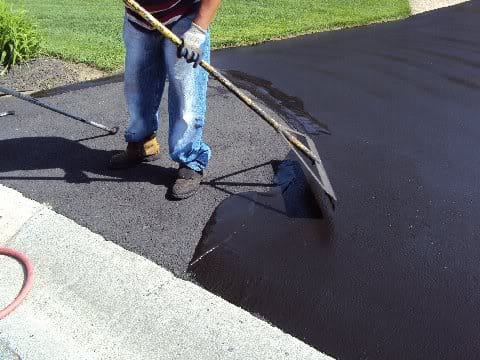Boost Pavement Efficiency: Cold Mix Asphalt Sealing Methods
Boost Pavement Efficiency: Cold Mix Asphalt Sealing Methods
Blog Article
Cold Mix Asphalt Vs. Hot Mix Asphalt: Which Is Right for You?

Composition Distinctions
Cold mix asphalt is produced by emulsifying the asphalt binder with water and an emulsifying agent prior to mixing it with aggregate. The warm mix asphalt manufacturing procedure includes heating up the accumulation and asphalt binder individually prior to integrating them at the asphalt plant.
Additionally, chilly mix asphalt has a tendency to be less dense and more flexible than hot mix asphalt. This flexibility makes it far better suited for areas with greater levels of motion, such as driveways or roads with hefty traffic. On the other hand, warm mix asphalt is known for its high durability and resistance to rutting and fracturing, making it a recommended choice for highways and high-traffic roads where long life is critical.
Installment Refine Variations
The process of setting up cool mix and warm mix asphalt shows noteworthy variances in their needs and treatments. In comparison, warm mix asphalt requires an extra fancy installment process. Due to the heating requirements, warm mix asphalt installations are typically lugged out by professionals with specialized equipment, guaranteeing an extra permanent and structurally audio result.
Durability and Durability Elements
When thinking about asphalt options, longevity and longevity are important variables to review for lasting sidewalk efficiency. Hot mix asphalt (HMA) is understood for its phenomenal longevity and long life.
In terms of long life, HMA generally outshines CMA due to its premium strength and resistance residential or commercial properties. HMA pavements have a longer service life, needing less frequent repair work and maintenance, which can translate to cost savings in the future. Additionally, HMA sidewalks are much more quickly adjustable to fulfill details project needs, additionally enhancing their toughness.
Expense Considerations
Considering the economic implications is a critical facet when examining the selection between hot mix asphalt (HMA) and cold mix asphalt (CMA) for pavement projects. While the initial price of hot mix asphalt is usually higher than that of chilly mix asphalt, HMA typically gives a much more affordable service in the lengthy run due to its exceptional longevity and durability.
In enhancement to product expenses, it's vital to take into consideration the expenses linked with installation and maintenance when comparing HMA and CMA. Ultimately, the choice in between HMA and CMA must asphalt repair take right into account not just the preliminary price however additionally the lasting monetary effects to figure out the most economical option for the particular pavement project.
Environmental Influence Contrast
Contrast of the ecological impacts between hot mix asphalt (HMA) and cold mix asphalt (CMA) exposes unique differences in sustainability practices. HMA production needs high temperatures, causing boosted power consumption and greenhouse gas discharges. The process also releases unstable natural compounds (VOCs) and hazardous air contaminants (HAPs) into the environment. On the other hand, CMA is created and applied at reduced temperatures, decreasing power use and exhausts significantly. The reduced manufacturing temperatures of CMA result in reduced gas usage and reduced levels of CO2 discharges, making it an extra eco-friendly option.
Additionally, the usage of CMA often includes reusing existing asphalt pavement, advertising resource conservation and lowering the amount of waste sent to landfills. By opting for CMA over HMA, roadway construction projects can add positively to ecological conservation initiatives.
Conclusion
To conclude, the option in between cold mix asphalt (CMA) and hot mix asphalt (HMA) depends upon different variables such as structure, setup procedure, longevity, long redirected here life, expense, and environmental effect. asphalt patch repair. While CMA offers a affordable and quick service for minor repair services, HMA guarantees superior sturdiness and durability for hefty web traffic locations. Take into consideration these factors carefully to establish which kind of asphalt is the right selection for look at this web-site your paving requires

Taking into consideration the economic implications is a crucial aspect when evaluating the choice in between hot mix asphalt (HMA) and cool mix asphalt (CMA) for pavement jobs. While the initial price of hot mix asphalt is normally higher than that of chilly mix asphalt, HMA frequently gives a much more economical solution in the lengthy run due to its remarkable longevity and longevity. asphalt patch repair.Comparison of the ecological influences in between hot mix asphalt (HMA) and chilly mix asphalt (CMA) exposes distinct distinctions in sustainability practices.In final thought, the choice between cool mix asphalt (CMA) and hot mix asphalt (HMA) depends on various variables such as structure, installation process, resilience, durability, expense, and environmental effect
Report this page